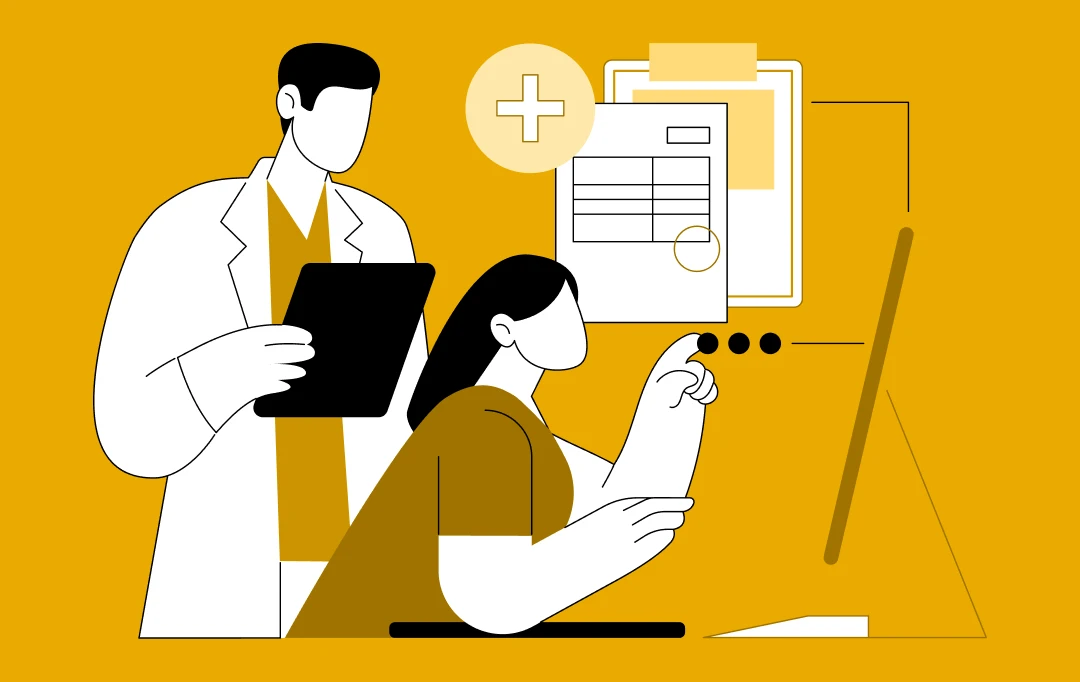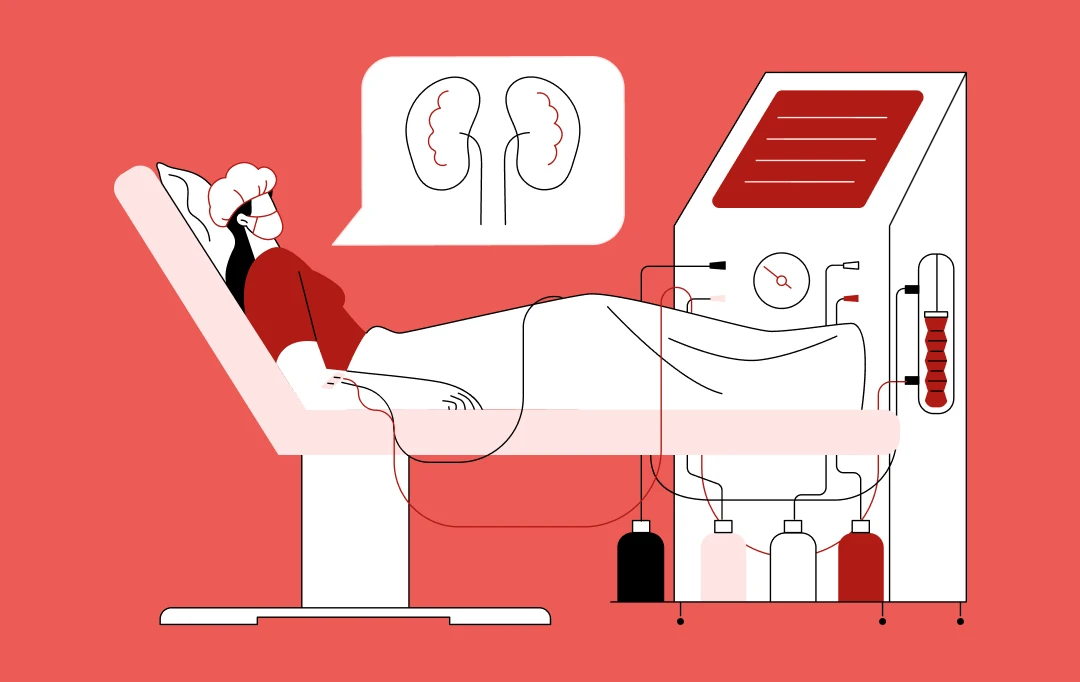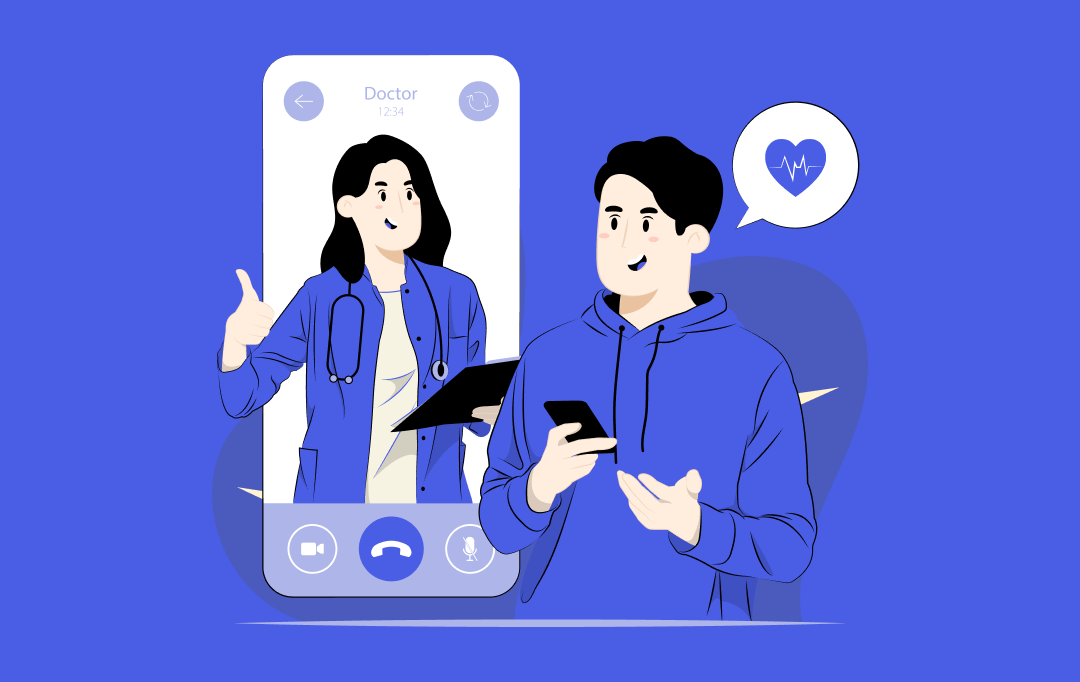- Case Study of China’s Adoption of Telehealth at Time of COVID-19
- The Use Cases of Telehealth Platforms That Goes Beyond COVID-19
- 1. Bettering Engagement Via Remote Monitoring
- 2. Expanding the Care Access
- 3. Improving Clinical Workflows
- 4. Increased Practice Revenue
- 5. Lowered Patient Costs
- The Use Cases of Telehealth at Time of Coronavirus Crisis
- Challenges Staring at Telehealth Adoption at Time of COVID-19
- Changes Made to the Key Telehealth Guidelines
The Trump administration in March announced that it would expand the telehealth services for all the Medicare beneficiaries and cut down on the stringent HIPAA enforcement as the most recent move for combating the coronavirus pandemic.
The era of social distancing has brought with itself a sharp impact on the global economy. The talk is not just around the coronavirus impact on health but also on several other fronts.
But keeping the focus on the healthcare sector, it is important to note how it has brought an inherent need to turn towards telehealth. It is in events like now, that people from across the world suffer from not just physical distress but also mental. And the responsibility then falls on the medical sector to ensure that everyone is keeping well and there are minimal casualties.
Seeing the nature of COVID-19 and the extent of the virus outbreak, the doctors and medical staff are one of the worst hit communities, for in a normal condition, they are ones exposed to the patients for the longest time.
In this article, we will look into the rise in telehealth adoption amidst coronavirus pandemic – one that has presented itself the solution of multiple coronavirus emerging issues that the sector is facing. We will look into the many benefits that telehealth offers, irrespective of whether the world is grappling with a pandemic outbreak or not – the benefits that prove the intrinsic role of mHealth in healthcare industry evolution.
But before we delve deep into the changing face of healthcare interactions through the rise of telemedicine amid coronavirus outbreak, let us take some ideas from China’s experience with telehealth.
Table Of Content
- Case Study of China’s Adoption of Telehealth at Time of COVID-19
- The Use Cases of Telehealth Platforms That Goes Beyond COVID-19
- The Use Cases of Telehealth at Time of COVID-19
- Challenges Staring at Telehealth Adoption at Time of COVID-19
- Changes Made to the Key Telehealth Guidelines
Case Study of China’s Adoption of Telehealth at Time of COVID-19
An article published in The Economist noted that the Chinese telemedicine services like Ali Health, WeDoctor, and JD Health, launched their online coronavirus clinics for the purpose of triaging and treating patients across the nation.
The healthcare platforms enabled Chinese patients to access care without needing to travel and thereby lowering the risk of spread and exposure. The West China Hospital of Sichuan University also partnered with china telecom and ZTE for rapidly deploying indoor and outdoor 5G connection for connecting patients with doctors remotely. And thus, reducing the risk of exposure while making it possible to treat patients in remote locations.
The example that China has set is now being followed by several US based companies like AmWell, Teladoc, abd Buoy, who are offering similar video and screening visit services.
Spectrum Health also announced that it would now offer free virtual screenings for Michigan individuals who have been experiencing COVID-19 symptoms. They will also advise individuals if they require additional care on the basis of the series of questions about their symptoms. The patients then will have the freedom for selecting caregivers they prefer.
“We want to provide a community health service for people who may have symptoms and are concerned about the virus, while allowing them to stay at home and prevent the spread of the illness,” Darryl Elmouchi, CMO & President at Spectrum Health, said.
The surge in people using these healthcare platforms are a hint of how telehealth should be an important component of any nation’s strategy for ramping up capacities for combating coronavirus outbreak while keeping all the health care facilities safe.
The Use Cases of Telehealth Platforms That Goes Beyond COVID-19

1. Bettering Engagement Via Remote Monitoring
The growing purpose of value-based reimbursement has led to health care systems emphasizing newer ways to engage with their patients in the direction of self-care. With growing instances of chronic health conditions, making use of telehealth to perform remote monitoring is one of the ways the medical providers are now improving the outcomes without cutting costs. It is also one of the ways the on-demand industry is preparing for the post-COVID world.
2. Expanding the Care Access
It’s a common fact that there is a physician shortage across the world. In fact, there are very limited geographical places where medical support is adequately present. Telehealth expands the provider networks in ways that take it to remote locations. It proves to be a highly efficient tool for inculcating patient education, diagnosis etc.
3. Improving Clinical Workflows
Telehealth plays a huge role in increasing clinical efficiency. It acts as a tool for prioritizing care delivery, triaging cases, and bettering the communication by gathering, storing, and using the patient data to aid efficient medical decision-making processes.
4. Increased Practice Revenue
In addition to lowering the per visit overhead cost, telehealth is a lot less time-consuming – for the providers and patients. It also allows the physicians to bill the uncompensated phone calls while extending the hours that go into capturing more billedtime. Telehealth tends to cut down no-shows and improves the practice efficiency.
5. Lowered Patient Costs
The cost that is spent seeking healthcare services runs both ways. It is not just the patients who spend but also clinics and hospitals who incur management and operational costs. Through a telehealth visit, doctors and patients can come on the same digital platform without having to incur any additional cost.
An example of its effectiveness can be seen in how the Oregon Health and Science University saved over $6.4 million annually for their patients in travel cost by the implementation of a telemedicine adoption program.
While the COVID-19 outbreak telehealth use cases are inherently the same as the non global pandemic telehealth use cases, the demand of the hour is to list some of them down. Here’s how coronavirus-focused custom healthcare software development company can expand telehealth use amid the coronavirus pandemic.
The Use Cases of Telehealth at Time of Coronavirus Crisis
For the patients: self and distance monitoring for home-isolated and self-isolated patients, distance monitoring and treatment for patients have mild cases, and follow-ups for the patients after they are discharged. It can also provide a routine care for the patients who have chronic diseases who are at a greater risk when exposed to the COVID-19 virus.
For the health workers: clinicians who have mild symptoms can still take care of patients remotely, there can be greater adoption of cross-border experience exchange and online training for the health workers. It solves one of the biggest counterintuitive problems of the medical staff. When the medical staff is tested positive for coronavirus, they are made unavailable to the healthcare system at a time when they are needed the most.
For the telehealth service providers: In the current time, multiple telehealth mobile platforms can be used for the purpose of triage and screening. The providers can make use of secure messaging, chatbots, and video calls for conducting the initial level screening and triaging of patients that might have been infected. Here are some of the live examples:
- UCSF launched an automated platform for proactively screening the patients entering UCSF facilities for their appointments. The platform has screened over 50,000 patients, and have helped in the identification of cases and controlling the spread of the virus.
- UW Medicine, housed in Washington, has been directing the patients having coronavirus symptoms to make use of the virtual clinic as their first access point. Others like NYU, OHSU, Langone, Intermountain, etc. are following the same mode. Through the mode of these visits, the providers are able to direct the symptomatic patients to get tested in ways which minimize the exposure to other health care providers and patients. Know how much it costs to develop a telehealth application.
Even though the adoption rate of telehealth solutions is seen to be on a rise, there are some key challenges that remain, keeping the coronavirus impact on health industries & sectors, dire.
Challenges Staring at Telehealth Adoption at Time of COVID-19
One of the main issues is the system scalability. The main challenge is the rising number of users operating on a platform in real-time. The time has been cut down from earlier ‘days’. This reduction – from days to hours and now real-time has been the contribution of cloud-based solutions. The telehealth solutions have to be made available on different users’ devices like smartphones, computers, and tablets.
It comes with the capability to unite multiple medical organisations in one virtual network. The network includes various physical locations: remote and central clinics, private and state clinics, prevention centres and rehab centres, physicians’ private offices and registered patients inside their locations.
The next thing lacking is the presence of telehealth solutions. The providers are hand-counted in US alone. So, when you account for the entire world, the numbers become all the more slim.
The following functions should be the priorities in the solutions: audio/video-conferencing, secure messaging, electronic scheduling, analytics and reports, billing and online payment, image and files uploads, integration with EHR systems, and e-prescribing.
Noting the lack of telehealth service providers across the globe, several key changes have been brought in the telehealth guidelines for boosting the COVID-19 care – ones that have eased the process of Health app development. Let us look at them as a parting note.
Changes Made to the Key Telehealth Guidelines
1. The AMA guide on telemedicine platforms into practice has gotten developed for helping physicians ramp up all of their telemedicine capabilities. In addition to informing the physicians the latest actions taken by CMS and OCR, the guide is aimed at giving them instructions on how to get started – the policies, codes, payments, practice implementations, along with links to resources.
2. The CMS Fact Sheet listed some key takeaways:
- Till the time of emergency, Medicare will be paying for the telehealth services which are furnished to the beneficiaries “in all areas of the country in all settings” at same rate as the usual, in-person visits.
- HHS will not be conducting audits for tracking whether there was a previous patient-physician relations for the claims being submitted during a public health emergency.
- Patients should initiate services, but the physicians must inform all of their patients of the telehealth service ability.
3. Discretion in the HIPAA rules
OCR, the HIPAA-enforcement branch of the HHS, declared that it will be exercising “enforcement discretion” and would not be imposing penalty for the non-compliance with the regulatory requirements in “good faith provision of telehealth” services till the COVID-19 national public health emergency.
The OCR notice mainly refers to security, privacy, and breach notification rules of Health Insurance Portability and Accountability Act (HIPAA), and in terms of the physicians and other healthcare providers who are seeking to connect with the patients through remote “non-public facing” communication technologies. Hire our telemedicine app development services to create a telehealth app that seamlessly connects both patients and caregivers.


- In just 2 mins you will get a response
- Your idea is 100% protected by our Non Disclosure Agreement.

Healthcare IT Outsourcing: Key Benefits, Best Practices, and Implementation Process
Key Takeaways Reduce Costs by 30-40%: Convert capital IT expenses to predictable operational costs, eliminating the need for large in-house teams and infrastructure. Focus on Core Patient Care: Free up internal resources from IT management to concentrate on core healthcare services, innovation, and growth. Ensure Compliance & Mitigate Risk: Leverage expert partners to navigate HIPAA…

How AI-Powered Virtual Health Assistants Are Enhancing Remote Patient Monitoring
Key takeaways: Remote patient monitoring has the potential to reduce hospital readmissions by up to a quarter, shifting healthcare from reactive to proactive care through continuous, real-time health tracking. The U.S. health intelligent virtual assistant market is expected to reach $1.87 billion by 2030, driven by the growing demand for continuous care, virtual consultations, and…

Why Telehealth Security is Non-Negotiable for Patient Trust and How to Achieve It
Key takeaways: Telehealth security is crucial for patient trust and the continued adoption of digital healthcare services. The rising tide of cyber threats, from ransomware to inadequate authentication, poses significant risks to patient data and provider reputation. Implementing robust security measures like end-to-end encryption, multi-factor authentication, and regular audits is non-negotiable. Compliance with regulations like…


















